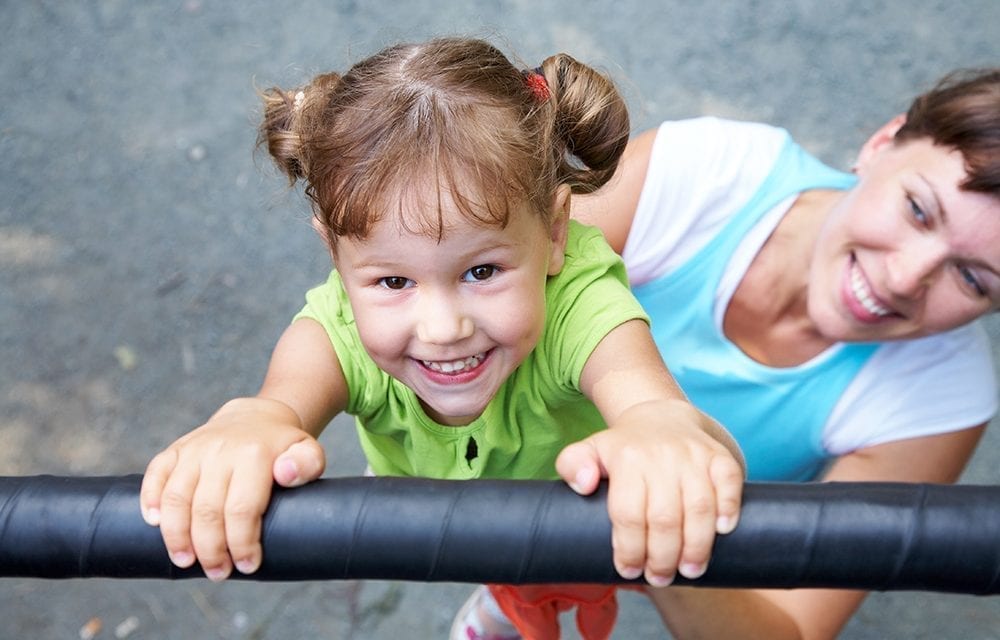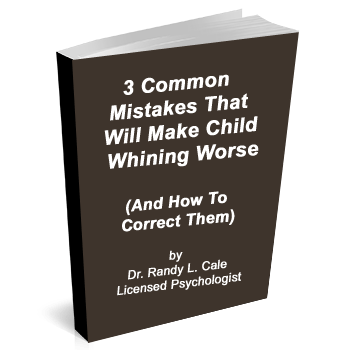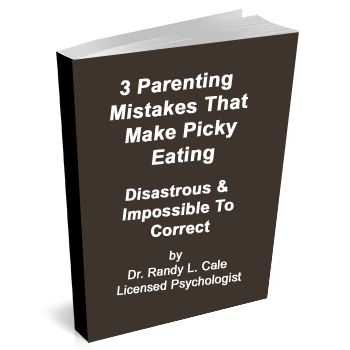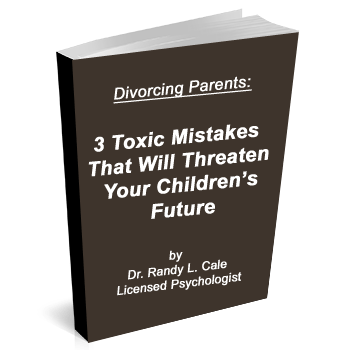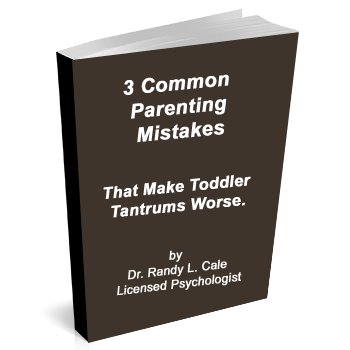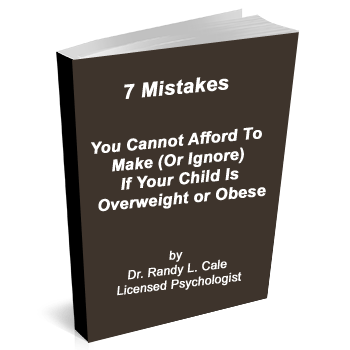The research in psychology documents the impact on adults and children of negative emotional states. For example, researchers have found that higher levels of pessimism predict shorter life spans and that an increase in depression is consistently related to a higher death rate for cardiac patients.
And guess what? It looks like people who are optimistic and happy not only live longer, but they have longer marriages, more pleasant experiences, and have fewer illnesses. Optimistic kids do better in school, persist longer at difficult tasks, and tend to be more successful with peers.
Research supports the value of focusing on the positive aspects of life and the role this focus can play in releasing negative emotions and building emotional resilience. Parents have a profound influence on the mental health and attitudes of their children. Parents can promote a positive, healthy atmosphere in the home.
Some parents wonder if they make a difference. I always say, “ABSOLUTELY!” Why do I state that with such certainty? Because not only does the data support the powerful role you play, but because I have seen the most remarkable changes in the most difficult kids… when parents commit themselves to a plan that works. So let’s talk about what you can do to influence pessimistic moods.
Negative or Positive: What You Model Is What You Teach
Parents often fall into a pattern of expressing their frustrations and negative attitudes to their children. This is natural, but we should remember that our children are always learning from what we model to them. In this case, we’re teaching them that it’s worthwhile to relive unpleasant experiences and focus on situations we can’t control.
When we come home from a tough day and complain about our coworkers or supervisors, our clients, company, the traffic, our children are learning. They’re learning to focus their attention and energy on factors and situations that they don’t control. This is how we can inadvertently pass on a legacy of pessimism and negativity. At home, we may complain about our spouse, our kids, money, the quality of TV shows, our car, or the neighbors. We’re teaching our children that complaining about the world as it exists is a good use of their time and energy. This is not the case if we want them to have a healthy, happy, optimistic outlook on life.
It’s unnerving to think that we can teach our kids to be optimistic or pessimistic without even realizing that we’re doing it. When we view the world through relatively pessimistic eyes, it affects the way we parent—the way we respond, use language, select consequences; in fact, our negative worldview affects every aspect of parenting.
But parents have another choice: They can pass on a legacy of optimism and joy. Try the five strategies that follow, and see if the optimism quotient goes up in your home.
Five Ways to Promote Optimism
1. Be optimistic.
You may be thinking, “Well, duh.” This strategy may be obvious, but it’s not easy for parents who are not optimistic by nature. It’s hard to teach something you don’t know. But if you truly want your kids to be optimistic and have a positive outlook toward life, find a way to create optimism for yourself first. Focus on healthy, enjoyable, and positive experiences. Read the right books. Talk to positive, uplifting people. Listen to inspirational messages. Get into therapy or find an excellent coach. Do whatever it takes to be able to walk your talk.
You could consider Dr. Cale’s multi-dimensional CD recording, Think Positive Now, as one avenue to assist you in becoming more optimistic.
Click Here to Order Think Positive Now!
Everything that follows here will flow from the assumption that you’ve chosen to be optimistic. I realize that this may not be as easy I assume for some of you. However, without addressing your emotional status first, the remaining portions of this discussion have less power to make a difference for your family.
2. Focus on what you can control.
In conversations with your children, focus on things that you or they can control. Avoid conversations about neighbors, coworkers, friends, or other aspects of your life where you have no control. This is an incredibly valuable lesson for your kids. If they begin to talk about factors that are out of their control, ask them, “Can you do anything about that?” If the answer is yes, encourage them and discuss the options. If the answer is no, end the discussion.
3. Solve the problem rather than complaining about it.
When children come home with stories of frustrating or upsetting experiences, it’s appropriate to talk to them and help them sort through their emotions. However, once you’ve had this conversation on one or two occasions, it’s time to change the focus. If you continue to engage in these conversations, your children will fall into the habit of complaining about their teachers, friends, clothes, toys, and you. You can avoid this by setting up a very simple rule: “No complaining. Let’s solve the problem.” Following this rule will ensure that you and your children focus on the aspects of life that you have some control or influence over. It shifts you from the complaint mode to the positive-action mode.
4. Promote these concepts with action rather than words.
It’s important to explain these ideas to your children, but it’s even more important to follow your prescription. Once you’ve told the kids that you’re not going to be involved with complaints, negative comments, or whining, make sure you follow through. Be willing to walk away. You don’t need to remind them about what you’re doing; just walk out of the room when they start down the path of negativity and focus your attention somewhere else. Let them complain to themselves all they want.
You’re doing this so they can learn just how much the world will care about their complaints. The world will turn its back on them if they focus on what’s wrong without taking any action to make it better. The earlier you model this for them, the sooner they’ll understand it.
5. Spend family time in positive, optimistic, and inspirational activities.
What do kids learn when they watch “South Park”? What do our children learn when we consistently take them to movies that portray violence as a solution to the conflict? Our children are always learning, so everything we expose them to is having an impact. The more we share time with our family watching inspirational movies or reading positive materials, the more our kids learn that this is what we value.
Even more important, let your time with your family reflect what you value most. What do you tell your kids is most important in life? What is highest on your priorities of values?
Do your family activities reflect those values? If so, that is awesome.
Unfortunately, many of us do it the other way around. We get tired, or overwhelmed, or depressed ourselves. We come home from work and reach for the TV, and grab a beer. We complain about our boss, yell at the kids, and model that life is not working out so well.
If you want a peaceful, healthy home and children who are optimistic about the future, choose activities that promote those values. Hold yourself accountable to the values you support and want your kids to promote.
The Value Of Positive Emotions
The more you engage your children during moments of positive emotion, the more you’ll enhance and expand these moments of happiness and joy. You can build psychological resiliency and trigger an upward spiral toward improved emotional well-being. When we promote moments of joy and laughter for our children and use our attention to help expand these moments, we’re creating optimism and happiness in their lives.
In many situations, the way through a set of negative emotions and experiences is not by dwelling on them; rather, it’s by moving on and letting positive emotions undo the damage. Thus, while we acknowledge the pain of difficult experiences our children may have, we don’t linger there or use questions to keep directing the child back to the pain. It’s not necessary to try to whitewash painful emotions. We can allow our children to have these feelings and trust that they’ll be able to get through them without our repeated intervention.
Positive emotions create positive lives. Children and adults who experience positive emotions tend to be more resilient in the face of difficulties, have fewer struggles with negative emotions, and have a higher sense of self-esteem. What can parents do to increase their children’s experience of positive emotions? Rather than just appreciating the joyful, happy, calm, and cooperative moments, join in! Laugh with your kids! Roll on the floor with them! You don’t need to do this for two hours—just join in the play and laughter and fun for five minutes. You’ll be laying the groundwork for a happy, optimistic child.
Please read about the accumulating effects of a shift in your behavior, by exploring the 1% Solution.

